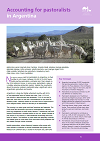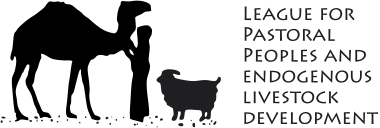María Rosa Lanari, Marcelo Perez Centeno, Graciela Preda, Mariana Quiroga Mendiola, Mercedes Ejarque, Sofia Lammel, Martín Moronta, Juan Quiroga Rogers, Pablo Losardo, Pablo Frere / League for Pastoral Peoples and Endogenous Livestock Development / 2020
Argentina has perhaps 35,000 households that practise pastoralism, mainly in three regions: the Puna altiplano in the northwest, the Gran Chaco region in the north, and the mountains of northern Patagonia. It developed out of traditional practices by indigenous groups, which were adopted by settlers from Europe. It is now largely practised by indigenous communities and Criollo people of mixed descent. They keep llamas, sheep, goats, cattle and horses. Their products include meat, dairy products, wool and cashmere, and handicrafts.
Pastoralism is estimated to contribute as much as 1.4% of GDP, compared to 7–9% for agriculture as a whole. Much of the trade in animals and products is informal.
Pastoralism is poorly documented: no official definition or statistics exist for Argentina, so pastoralism is invisible to policymakers. This lack of data could be overcome by including questions in the census on the mode of livestock production. Research is needed on pastoralism and its role in the economy and ecology.

Download document
